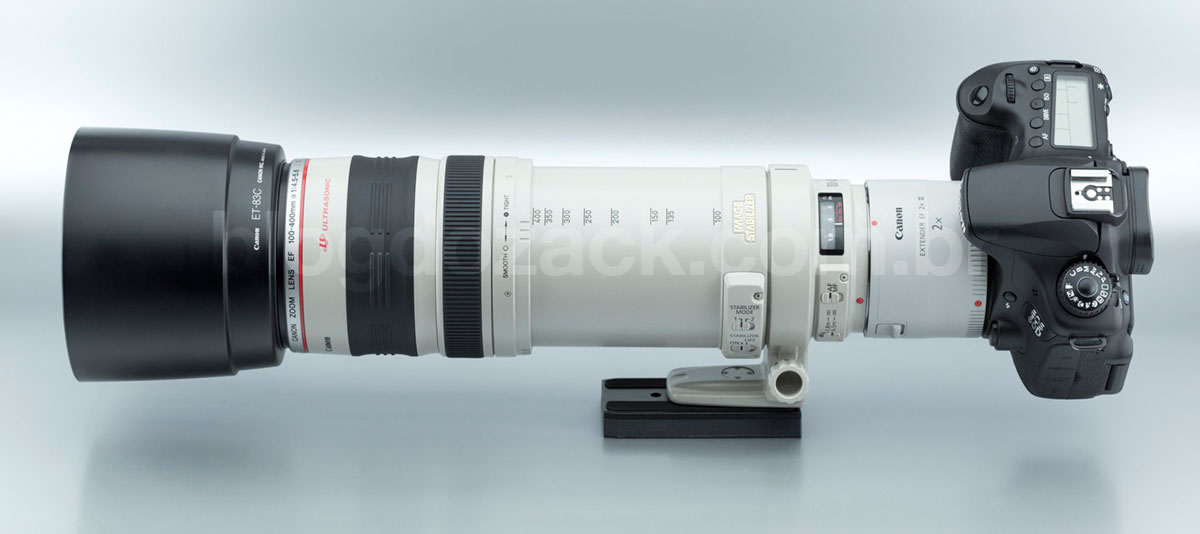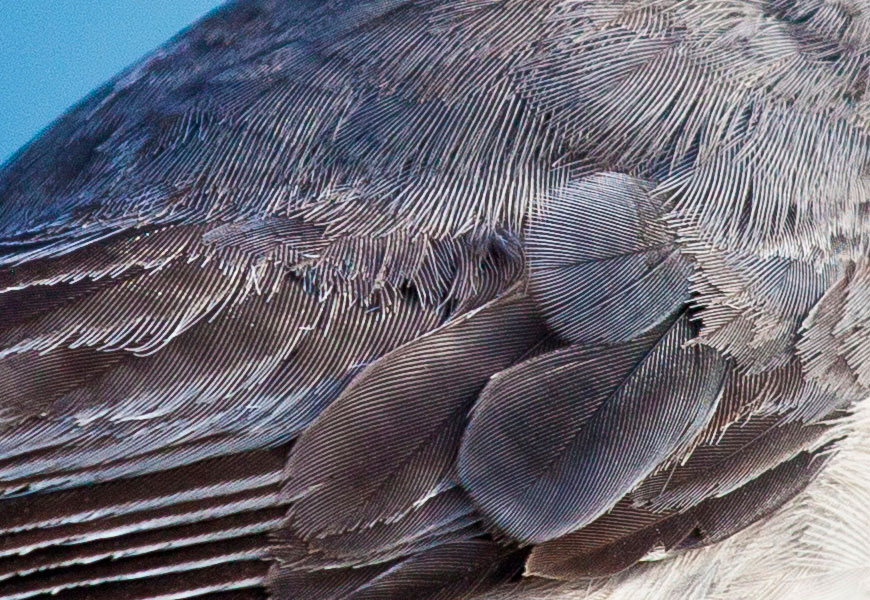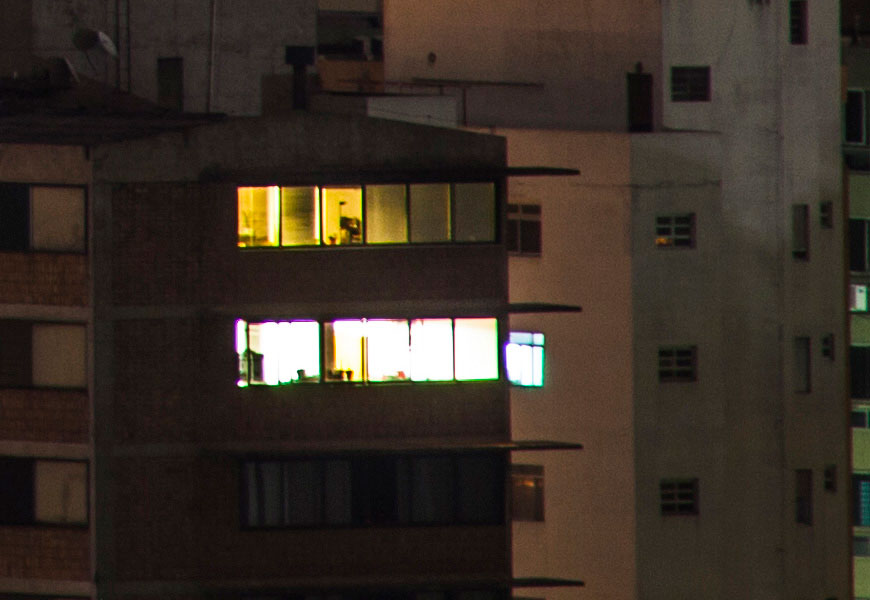Estimated reading time: 13 minutes.
December/2014 - The EF 100-400mm f/4.5-5.6 L IS USM is a “compact” super telephoto zoom for Canon full frame cameras. At 100mm, it’s excellent for portraits, extending all the way to the 400mm and only 6º of angle of view, nice for distant animals, landscapes and sports; made for professionals. So it is expected to be a top of the line build, AF performance and optics.

It got on vlog do zack out of curiosity to test if the native 400mm were better that the EF 70-200mm f/2.8L IS II USM + EF Extender 2X III combo. The super telephoto is not a focal length I use a lot, and their larger than life packages are a pain to carry around. And as the EF 400mm f/5.6L USM purchase went down the drain, I decided to give the zoom lens a chance, as it’s a very popular lens on Canon’s lineup. I don’t regret it: although it is very old, this L series offer class-leading performance and many extra functions, for an interesting price. Happy reading!

Before we talk about my old “Mark I” EF 100-400m f/4.5-5.6L IS USM, Canon just updated it for the 2014 Mark II: one US$1699, the other US$2199. The spec remais exactly the same, a 100-400mm focal range with a variable f/4.5-5.6 aperture, all stabilised, all metal. But the new model features over 16 years of technological development and delivers better optical performance, build robustness and reliability. Inside there are four (!) new glass pieces (21 in total), with the same 01 fluorite + 01 Super UD, but a Canon’s first “Air Sprere Coating” (ASC) between them.

It consists of nano air particles trapped inside a coating, making the light lose its speed before it crosses the glass piece. This way it is possible to reduce flaring and ghosts typical of long telephoto lenses, enhancing contrast and colour saturation. The images are more vivid, just like the EF 24-70mm f/2.8L II USM and EF 70-200mm f/2.8L II IS USM files. So you’ll get essentially the same look from 24mm to 400mm. Also the new lens got fluorine coating on the first and rear elements to make them easier to clean; the latest generation four stops IS, with a third exposure only mode; new zoom mechanism; and better weather sealing. It will arrive on the market on 12/12/14.

At 1380g, the EF 100-400mm f/4.5-5.6L IS USM is a giant EF lens. Entirely made of metal, it’s a work horse made for tough situations, withstanding years under pressure. Nothing wobbles out of place and it is very precise, very high quality. After all it is 17 elements in 14 groups that just won’t misalign over time. It’s made with professionals in mind, to withstand time.

The first thing you’ll notice is the push-pull zoom system. Instead of rings that drive a threaded barrel, the push-pull lens literally move the barrel with your hands. Closed at 100mm in 18.9cm, it’s what Canon’s call a “compact telephoto”. But at 400mm it grows to 27cm! Mount the 9.5cm included lens hood and you have a very impressive 36.5cm worth of metal and glass. Want some more? It accepts the EF Extender 2X for an extra 5.2cm. You end up with 800mm 40cm lens; equivalent to 1280mm f/11 when mounted on an APS-C format “crop” camera.

Some like the push-pull design, others hate it. For the haters, their main concern is the possibility of sucking dust inside the lens when the air moves to fill the space. And those who like it, say it is much faster than a zoom ring. In my opinion they’re both right, but shouldn’t really complain all that much. My EF 100-400mm has minimum dust inside besides being almost four years old, and I used at the beach many times. And indeed it is very quick to go from 100mm to 400mm, perfect to easily frame fast moving subjects, like sportsmen or cars in a race track.

For beginners, there’s even a “smooth/tight” ring that controls the zoom friction for speed or precision. Turn to the tight side and it gets harder to move; you can even lock the lens in place. But turn to the “smooth” side, and it gets light as a feather, increasing the speed. It’s a very different mechanism (only the EF 28-300mm L shares it) and the 100-400mm Mark II abandoned the push-pull thingy. It won’t take you five minute to get used to it if you decide to go for the Mark I.

Anyway the rest of the usability is very traditional with a front manual focusing ring, putting both the zoom and focus adjustment on the same hand. It is interesting the distance window is very far from the focusing ring, near the mount, indicating the focusing group is actually at the back. So you can image Canon’s engineering to design so many pieces to keep the MF ring at the right place. And it’s well built, well damped, with no play, even supporting the full time manual.

Inside the ring type USM is genuinely Canon. Very fast and silent, I have virtually no out of focus shots even with the AI Servo mode on the EOS 5D Mark II. The minimum focusing distance of 1.8m is typical of most telephotos, and enough to isolate small subjects like birds, filling the frame with details. But the 1:5 maximum magnification is poor, nor really a macro substitute. You can limit the AF distance to increase the AF speed for up to 50% if you’re sure your subject won’t get any closer.

100% crop, excellent resolution on the center of the frame.
NOTE: Keep in mind the f/5.6 aperture is the limit for most EOS phase detection modules. Only the 1D line and 5D Mark III can lock focus at f/8 with the center point, if you use the EF Extender 1.4X. But with the EF Extender 2X, no EOS camera will focus with the phase sensor, as the maximum aperture will be f/11. Use the Live View instead, as the contrast detection AF will work.

Another great Canon top of the line feature is the IS implementation, here on the second 1998 generation. It is just two stops of compensation that barely holds the 400mm focal length in place. I recommend keeping the golden 1/focal_lenght rule at all times, even with the IS ON. It helps up to 200mm, but after that it is obvious we’re talking about a 16 years old lens. It has two mode, one general purpose and another panning only. But the viewfinder jumps a lot when you reach the limit of the IS system, an it is noisy. This is one of the biggest reasons to get the newer 2014 Mark II lens.
At the front the ø77mm filters are excellent and shared with other high end zooms, like the 70-200mm f/2.8L. The included in the box lens hood is very old, with a smooth plastic that begs for scratches, and it takes a lot of force to mount it in place, different from newer versions with a button release. Bu it does its job reducing flaring and enhancing contrast. The tripod colar is also in the box and Canon recommends mounting it instead of the camera, as the 100-400mm lens is very heavy. And some say the push-pull design actually features some weather sealing, but there’s no rubber gasket around the mount. When in doubt, keep your equipment protected. It’s an excellent overall built that didn’t actually asked for an update. It is still on Canon’s lineup.
Besides the old design, the EF 100-400mm f/4.5-5.6L IS USM was always regarded as an excellent zoom lens on Canon’s lineup. With one fluorite and one Super UD element, the resolution is excellent through the zoom range, with impeccable sharpness from the center to the corners that gets even better with one or two stops down. Geometric distortions are practically invisible on straight lines, and in my opinion the bokeh is adequate, aside some different internet opinions. The bad is the pronounced lateral CA around the edges, but easily fixable via software. It delivers on what it promises: high performance with excellent images. All photos with the EOS 5D Mark II.
Wide open and its not-so-exotic aperture at f/4.5 @ 100mm and f/5.6 @ 400mm maintain a high resolution image around the center. It marries well with modern digital sensors, rendering fantastic details in the middle of the frame, nice to make your subject pop with so much sharpness, against a diffuse, colourful background due to the shallow depth of field. On a closer analysis, the edges are indeed lagging behind at f/4.5-5.6, but make no mistake: it’s never unacceptable and definitely usable for most prints, even very large ones from high resolution image sensors.

“Bird II” at f/5.6 1/1600 ISO500 @ 400mm, the wide aperture and telephoto distance easily isolates the subject.

100% crop, a brilliant resolution figure wide open at 400mm!

100% crop, an easy to use lens, not dependant on aperture for detail reproduction.

100% crop, impeccable fur rendering wide open.
Stopping down to f/8 the frame gets brighter overall as the vignetting is reduced giving a different look to your images. The corner resolution improves and it is possible to make large prints from the files, be it landscapes, 90º portraits etc. Even stopped down the depth of field is short depending on your working distance, and the eight blade rounded aperture created a pleasing bokeh.

100% crop, yes, self portrait…

100% crop, even at f/8 the DoF is shallow at 250mm on full frame cameras.

“Hawaii III” at f/8 1/1250 ISO200 @ 400mm; more than enough light for an ISO200 f/8 exposure, with an action-freezing shutter speed!

100% crop, professional level details for publishers.
The out of focus quality that some say it’s not great on the 100-400mm L, I actually found to be adequate in my photos. You can easily melt the background and play with primary colour compositions, two meters from your subject at 200mm, focusing the attention to whatever falls the image plane. Leafs, textures, fences will all be gone and makes it a perfect tool for a unexpected subject: portraits. While the 400mm are best for far away subjects, the 200mm are pleasing for the human figure, with enough perspective compression to leave everything in its right place.

100% crop, impeccable resolution at f/8.
Some lateral CA is visible on overly lit contrast lines around the edges. Mostly on urban landscape photos, I saw those purple neon edges around buildings that require heavy post processing before large prints. This is the only optical flaw the new Mark II could handle better, as contrast, colours and resolution were never a problem on the Mark I. And it doesn’t really happen on organic subjects, like people, plants and nature landscapes, with less chances of high contrast edges.

100% crop, lower right corner with some CA.

100% crop, it’s not really a problem. How to deal with all this resolution?

100% crop, chromatic aberrations don’t appear on well exposed files.
At last, colours and contrast are impeccable, not an easy task for long range telephotos. The light can scatter inside the lens barrel and distort with so much air between the glass pieces. But it wasn’t really a problem on the EF 100-400mm f/4.5-5.6L IS USM Mark I even though Canon created the ASC on the Mark II. The newer version must be a killer colour tool!

100% crop, Canon’s perfect colours science.
One of the main reasons I added the native 100-400mm zoom on my kit was to test it against the converted EF 70-200mm f/2.8L IS II USM + 2X; my prior super telephoto combo. And obviously the 100-400mm takes the trophy with better resolution and contrast. But it doesn’t handle the lateral CA that well, that is invisible on the naked 70-200mm, and very small after the conversion. All photos made with the Canon EOS 6D and mounted on a sturdy tripod.

at f/5.6 @ 400mm. Left is 70-200mm + 2X and right is the 100-400mm. Wide open sharpness is higher on the 100-400mm.

at f/5.6 @ 400mm. Left is the 70-200mm + 2X and right is the 100-400mm. Wide open sharpness is higher on the 100-400mm.

at f/5.6 @ 400mm. Left is the 70-200mm + 2X and right is the 100-400mm. The newer 70-200mm shows less lateral CA besides the conversion.
Wide open, the zoom lens + extender combo shows a visible lack of sharpness compared to the 100-400mm native lens. But if it’s going to make any difference depending on how you handle the file? I doubt it. The lack of contrast can be fixed in software, so can the colours. And Photoshop’s Smart Sharpen tool can bring some of the lost sharpness back. Also remember the new 70-200mm + Extender 2X III improves on the IS and weather sealing, making a good companion (but not substituting) the 100-400mm Mark I. Only the new Mark II might take its place.

at f/8 @ 400mm. Left is the 70-200mm + 2X and right is the 100-400mm. Stopping down and the difference is not that visible.
It all comes down to cost too. Obviously owning both 70-200mm f/2.8 and 100-400mm f/4.5-5.6 on the same kit makes sense if you’re a heavy telephoto shooter. But combined, they’re over US$4000 after taxes, while the 70-200mm + Extender won’t cost more than U$3000. I decided to keep the zoom + 2X III combo, as I rarely shoot at 400mm. All photos from this review could be done with the teleconverted optics and maintain an usable, high resolution file for printing.

at f/5.6 @ 400mm. Left is the 70-200mm + 2X and right is the 100-400mm. Better 100-400mm sharpness wide open.
And we can even compare them at 200m. The EF 100-400mm f/4.5-5.6L IS USM at 200mm is still wide open at f/4.5, but the resolution lags behind; it is much worse than the EF 70-200mm f/2.8L IS II USM, 1.5 stops closed down at f/4.5. But at f/8 both look virtually the same. So remember to stop down your 100-400mm if you plan on shooting high quality portraits.

at f/4.5 @ 200mm. Left is the 70-200mm and right is the 100-400mm. Wide open sharpness is lower of the 100-400mm compared to the stopped down 70-200mm.

at f/8 @ 200mm. Left is the 70-200mm and right is the 100-400mm. The 100-400mm sharpness gets a healthy boost at f/8. But the 70-200mm is way ahead.

Besides the maximum f/5.6 aperture, the phase detection limit of most Canon’s EOS, the EF 100-400mm f/4.5-5.6L IS USM is completely compatible with both the EF Extender 1.4X (140-560mm f/6.3-8, focusing only on the 1D, 5D Mark III and 7D Mark II), and 2X (200-800mm f/9-11), focusing only by contrast detection during Live View. Mounted on an APS-C camera and you get a 1280mm f/11 equivalence. Of course the image quality will take a big toll and it demands loads of light to expose at 800mm f/11. But depending on what you’re shooting, it is actually a lot of fun! You can enhance the contrast on post; raise the ISO to 1600; and it stop down for acceptable resolution.

100% crop, not the best sharpness, but it works.

100% crop, the resolution is there, but straight lines start to “vibrate”.
Working so far from your subject adds a lot of air between the photographer and the motif, and depending on weather conditions, a problem called “atmospheric distortion” can mess with your files. Especially under hot weather, the air movement bends the light on different directions, reducing the apparent sharpness of the details. Everything will turn into mush and requires special care on your timing. Shoot in the morning or right before the night to avoid the hot air beds between you and your subject. If you find it, don’t freak out: it’s not a defect in your lens.

100% crop, “unpublishable” file after heavy atmospheric distortion.
A US$1699 exotic L series because of the very long reach, that few zoom lenses get with such a high optical performance. The EF 100-400mm f/4.5-5.6L IS USM is one of Canon’s “hits” since its introduction. Its untraditional design is a love or hate situation. But the impeccable build quality will certainly win you over. And it lasted 16 years between a major upgrade, showing it wasn’t a bad lens to begin with. There’s almost nothing to complain about from a great product.
I’ve got to admit it landed on my kit for a silly purpose: to pitch it against the 70-200mm + Extender 2X. But once I really need the focal length, it didn’t disappointed me: the faraway framing is very unique, and its colours and contrast are impeccable. Now we must wait and see what the Mark II brings to the table. I don’t think Canon really needed to update much on the 100-400mm lens.